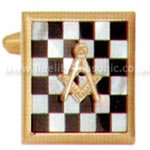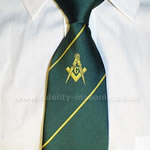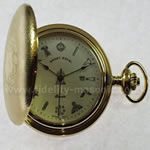The Lewis in Freemasonry
As a technical term in Operative Masonry, the lewis is an iron cramp, or clamp, which is inserted into a cavity prepared for that purpose in any large stone, so as to give attachment to a pulley and hook whereby the stone may be conveniently raised to any height and deposited in the proper position. The interlocking pieces use the mass of the stone the tighten their grip while permitting ease of insertion and removal. The contrivance was known to, and used by, the Romans.
Under the English Constitution the lewis appears on the Tracing Board of the Entered Apprentice where it is used as a symbol of strength.
Under the Constitution of the Grand Lodge of Antient Free, and Accepted Masons of Scotland the Lewis has a further interpretation: the son of a Freemason, who is entitled to make application for initiation into the Scottish Craft at the age of eighteen, rather than the more usual twenty-one. While there are those who might question the commitment of a member joining at this young age, there is nothing to suggest that a Lewis is any more likely than a mature candidate to fall by the way-side. Ultimately it is the encouragement and tutelage of the Proposer, Seconder, and indeed every member of the lodge which will engender the habit of good attendance and participation in the workings of the lodge.
There have been many instances where a member, having joined as a Lewis, has gone on to attain the Chair of King Solomon at a young age, bringing with him the energy, enthusiasm and drive which are so often attendant upon youth. Continued and extended service as a Past Master are contingent benefits.










0 Comments:
Post a Comment
<< Home